#words with certain suffixes or prefixes
Explore tagged Tumblr posts
Text

On some of them I had to take an "educated" guess. The unknown antonyms are easier to guess than unknown synonyms, as they usually follow a pattern.
I got the Top 4.47% on this English Vocabulary test
#dont ask me to explain the pattern#because i cant#other than to say#words with certain suffixes or prefixes#will be matched with antonyms that also have specific (though different) suffixes or prefixes
195K notes
·
View notes
Text
My zine, 'Label Coining as an Artform', is finally done! Transcript/Image ID underneath (warning: it's long). Printed version in a reblog.
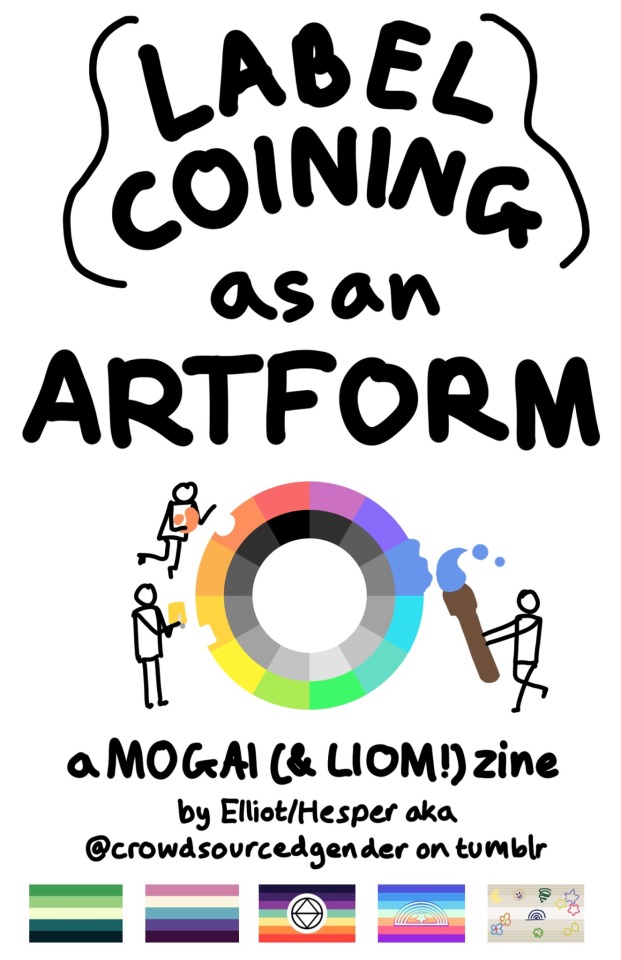
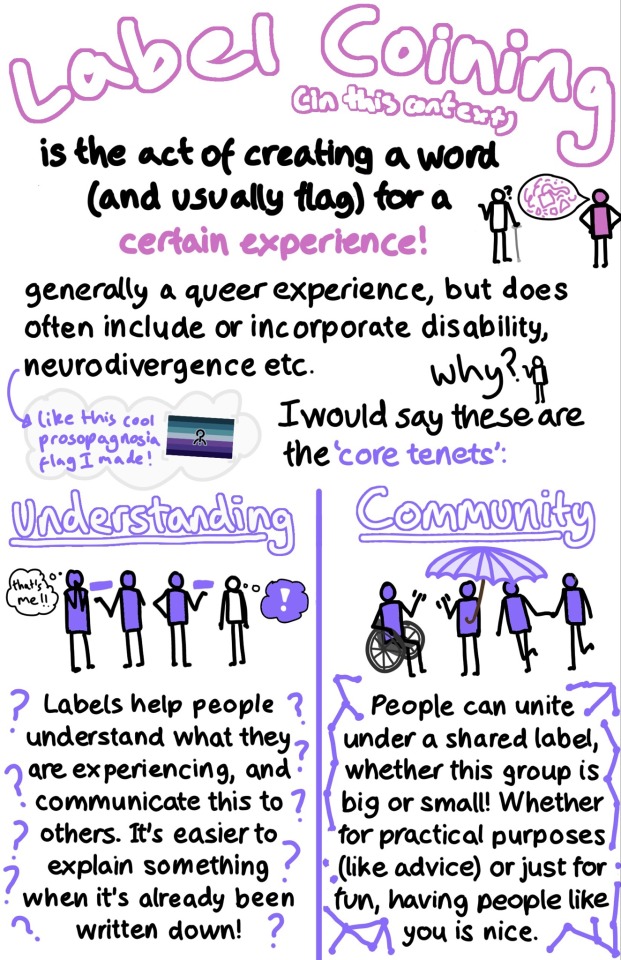
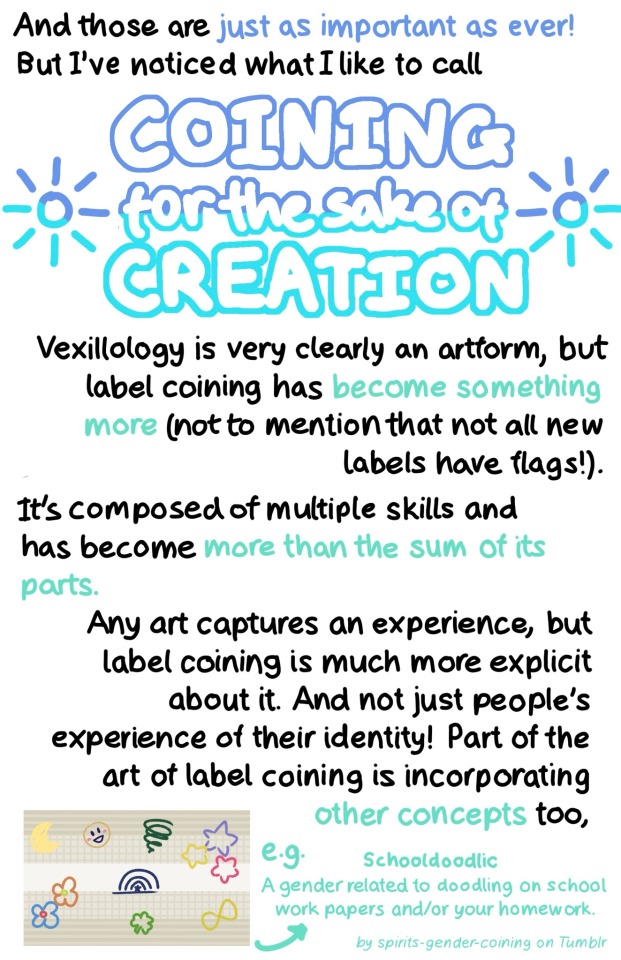
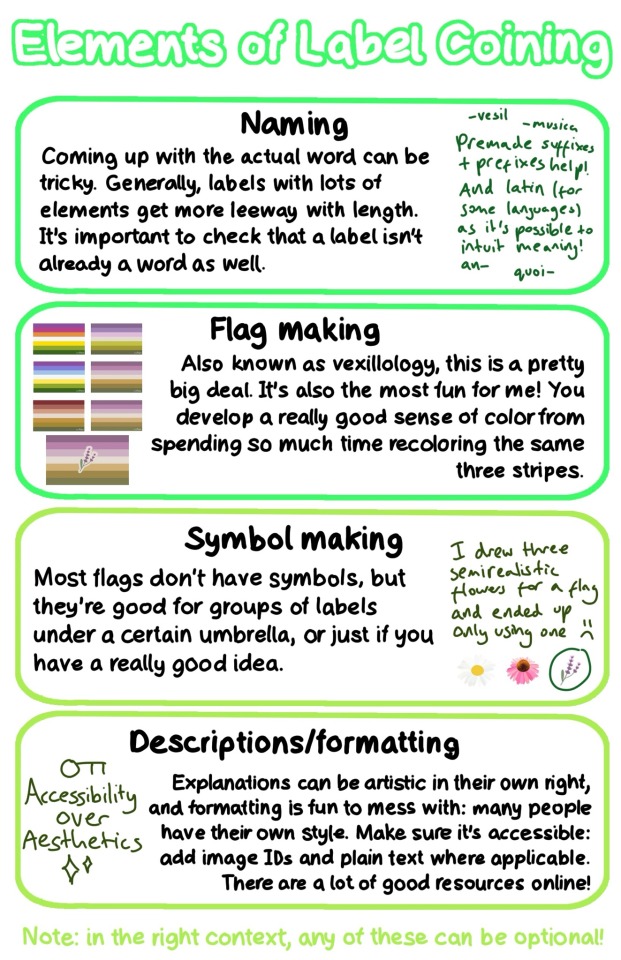
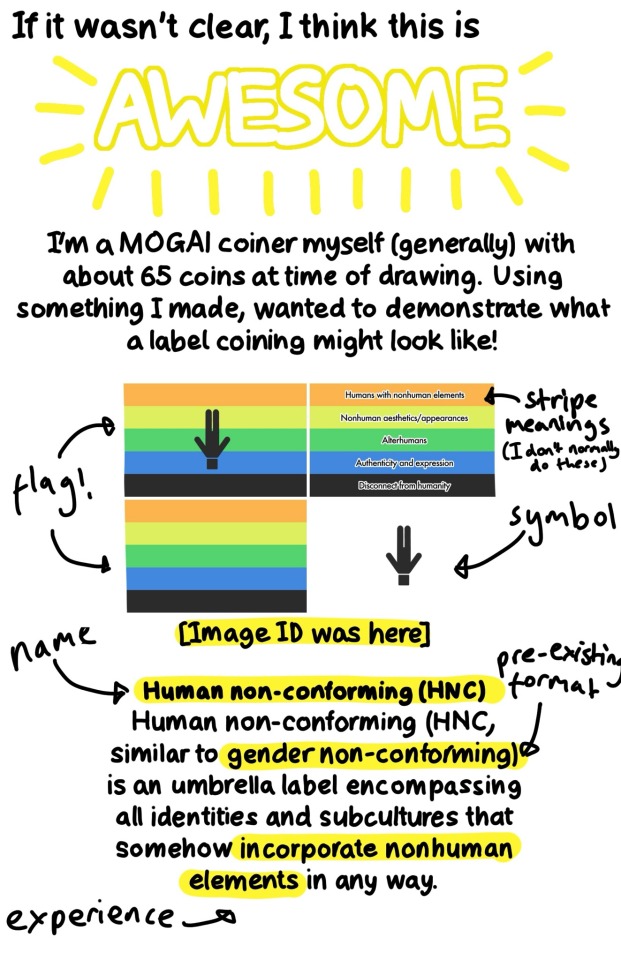
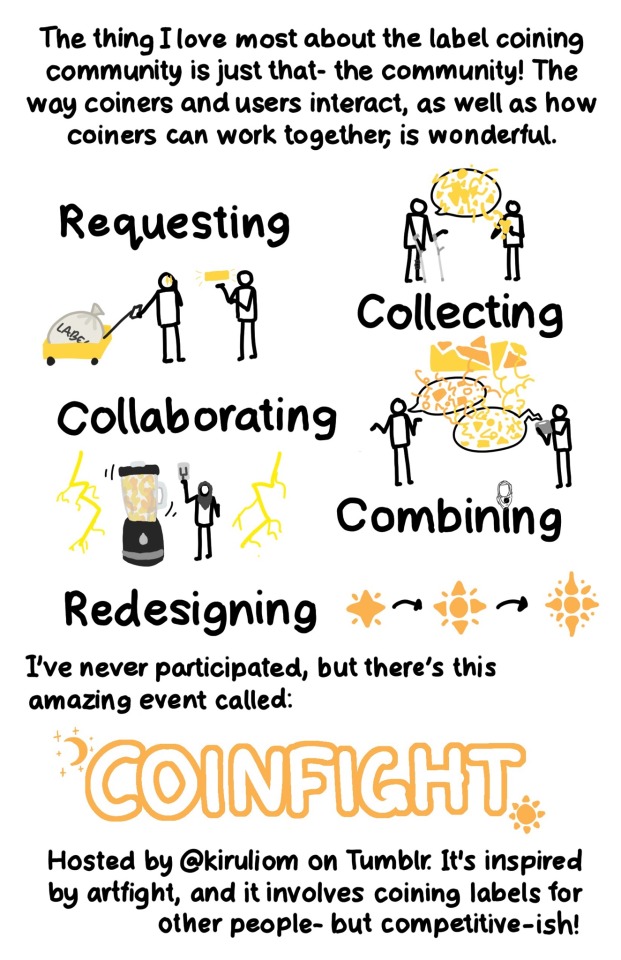
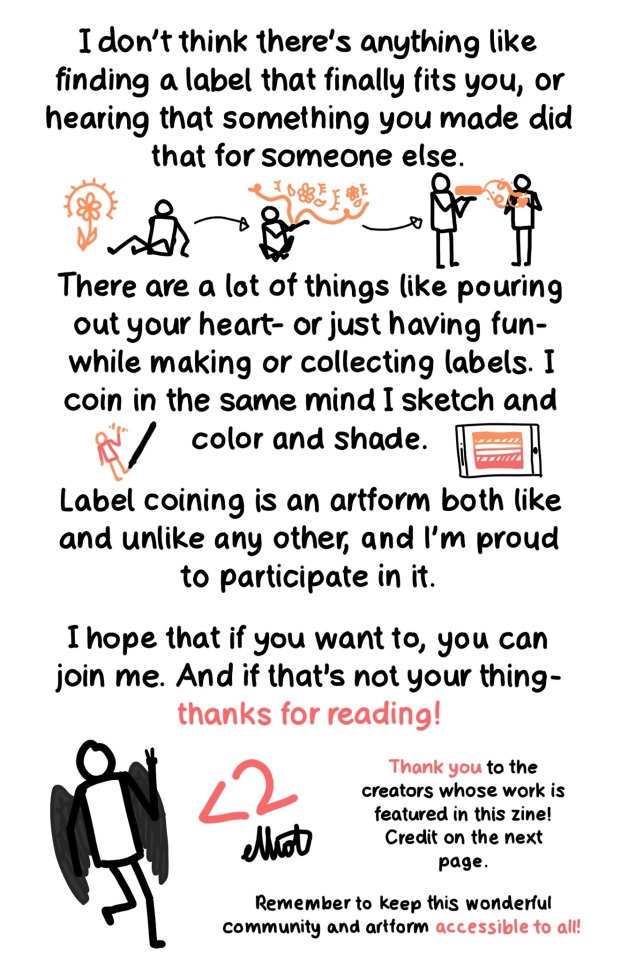


[Image ID: A series of pages in a zine. The text is handwritten, and all figures described are simplified stick figures.
Page 1: ‘LABEL COINING as an ARTFORM in large text. Below is the multicolored MOGAI wheel, with three figures taking pieces of the colors and using them for art: sculpting, cutting a piece of paper, and painting. Below is ‘a MOGAI (& LIOM!) zine by Elliot/Hesper aka @ crowdsourcedgender on tumblr. Under the text are five pride flags: aro-spec, veldian, alterhuman, xenoman, and schooldoodlic.
Page 2: ‘Label Coining’ in large pink text. ‘(in this context) is the act of creating a word (and usually flag) for a certain experience!’. Next to this text is a figure filled in with pink with a speech bubble full of pink shapes, talking to someone using a cane holding out a hand and expressing a question mark. Below reads ‘generally a queer experience, but does often include or incorporate disability, neurodivergence etc.’ A figure asks ‘Why?’ and the text reads ‘I would say these are the ‘core tenets’:’. In a cloud next to this text is a blue and purple pride flag with purple text reading: ‘like this cool prosopagnosia flag I made!’.
The bottom half of the page is split into two columns: ‘Understanding’ and ‘Community’. The first column has a purple arm amputee explaining a purple rectangle to another purple person who is thinking ‘that’s me!!’. Next to them another purple person is explaining the same rectangle to a blank person, who has a purple-filled thought bubble with a white exclamation mark. Underneath the drawing is text surrounded by question marks: ‘Labels help people understand what they are experiencing, and communicate this to others. It’s easier to explain something when it’s already been written down!” The second column has a purple person holding a purple umbrella. They are waving to a purple person in a wheelchair. A purple person is leading another one to the group. Underneath the drawing is text surrounded by connected dots: ‘People can unite under a shared label whether this group is big or small! Whether for practical purposes (like advice) or just for fun, having people like you is nice.
Page 3: ‘And these are just as important as ever! But I’ve noticed what I like to call COINING for the sake of CREATION’. This last phrase is in large, dark and light blue text. Two sun symbols are on either side. Below is the text: ‘Vexillology is very clearly an artform, but label coining has become something more (not to mention that not all new labels have flags!). It’s composed of multiple skills has become more than the sum of its parts. Any art captures an experience, but label coining is much more explicit about it. And not just people’s experience of their identity! Part of the art of label coining is incorporating other concepts too, e.g. Schooldoodlic A gender related to doodling on school work papers and/or your homework. By spirits-gender-coining on Tumblr.’ The text about Schooldoodlic is small and light teal. Next to the text is its flag.
Page 4: ‘Elements of Label Coining’. The text on this page is separated into four green boxes.
‘Naming: Coming up with the actual word can be tricky. Generally, labels with lots of elements get more leeway with length. It’s important to check that a label isn’t already a word as well.’ Next to this text is more rough, dark green text reading ‘Premade suffixes + prefixes help! And latin (for some languages) as it’s possible to intuit meaning!’ Around the text is a few examples: ‘-vesil’ ‘-musica’ ‘an-’ ‘quoi-’
‘Flag making: Also known as vexillology, this is a pretty big deal. It’s also the most fun for me! You develop a really good sense of color from spending so much recoloring the same three stripes.’ Next to the text is 6 versions of the same pride flag, each with slightly different colors, with a 7th final version with a symbol.
‘Symbol making: Most flags don’t have symbols, but they’re good for groups of labels under a certain umbrella, or just if you have a really good idea.’ Next to this is rough, dark green text reading: ‘I drew three semirealistic flowers for a flag and ended up only using one’ with sad face. Under it is a drawing of a daisy, a pink coneflower, and lavender, which is circled.
‘Descriptions/formatting: Explanations can be artistic in their own right, and formatting is fun to mess with: many people have their own style. Make sure it’s accessible: add image IDs and plain text where applicable. There are a lot of good resources online!’ In dark green text is the phrase ‘Accessibility over Aesthetics’ with an image of a key on top and sparkles below.
Underneath the boxes in light green text is ‘Note: in the right context, any of these can be optional!’
Page 5: ‘If it wasn’t clear, I think this is AWESOME’. Awesome is in large text with yellow radiating lines. Underneath is ‘I’m a MOGAI coiner myself (generally) with about 65 coins at time of drawing. Using something I made, I wanted to demonstrate what a label coining might look like!’ Underneath is four versions of the same pride flag as well as a description, with ‘flag!’ ‘stripe meanings (I don’t normally do these)’ ‘symbol’ ‘name’ ‘pre-existing format’ and ‘experience’ labelled. The description reads ‘[Image ID was here] Human non-conforming (HNC). Human non-conforming (HNC, similar to gender non-conforming) is an umbrella label encompassing all identities and subcultures that somehow incorporate nonhuman elements in any way.’
Page 6: ‘The thing I love most about the label coining community is just that- the community! The way coiners and users interact, as well as how coiners can work together, is wonderful. There are 5 large words each with an associated doodle.
‘Requesting’: A figure leaning on forearm crutches has a speech bubble with yellow shapes exploding out of it. Another figure is taking shapes down from the bubble and forming it into a ball.
‘Collecting’: A figure is pulling a yellow cart with a large cloth bag labelled ‘LABELS’. They have stars in their eyes, and are looking at another person who is gesturing to a yellow rectangle.
‘Collaborating’: Two figures, one with orange speech and one with yellow speech and an AAC tablet are discussing, with many shapes and lines intermingling to make a fragmented rectangle.
‘Combining’: A figure in a grey hijab pulls down a lever. They are standing next to a large blender mixing orange and yellow liquids. On either side is bright yellow lightning.
‘Redesiging’: A small star with four radial lines coming out of it becomes more and more complex, indicated by black arrows.
Under the words is the text: ‘I’ve never participated, but there’s this amazing event called: COINFIGHT. Hosted by @ kiruliom on Tumblr. It’s inspired by artfight, and it involves coining labels for other people- but competitive-ish!’ Coinfight is in large, text with a crescent moon with stars at the top right corner, and a star at the bottom left.
Page 7: ‘I don’t think there’s anything like finding a label that finally fits you, or hearing that something you made did that for someone else.’ Under is a figure looking at an orange flower with light lines, then forming elements of the flower into a bubble, then showing an orange rectangle to another figure, with orange tendrils reaching towards them, forming the shape of a heart. Below is the text ‘There are a lot of things like pouring out your heart- or just having fun- while making or collecting label. I coin in the same mind I sketch and color and shade.’ On each side is a pen drawing an orange figure with a red shirt, and a tablet with an orange and red flag. Under this is ‘Label coining is an artform both like and unlike any other, and I’m proud to participate in it. I hope that if you want to, you can join me. And if that’s not your thing- thanks for reading!’ There is a drawing of a figure with dark grey wings holding up two fingers. Next is a ‘<2’ heart and ‘elliot’ as a signature. In smaller text next to these is ‘Thank you to the creators whose work is featured in this zine! Credit on the next page. Remember to keep this wonderful community and artform accessible to all!’
Page 8: ‘Credit’: This section has a pride flag next to each label. ‘Aromantic-spectum, @ theflagarchive on Tumblr. Turian, @ kenochoric on Tumblr. Schooldoodlic, @ spirits-gender-coining on Tumblr. Xenoman, @ ryanyflags on Tumblr. MOGAI symbol, Pride-Flags on DeviantArt. Alterhuman, @ vaestra on Tumblr. (the flag on pg. 4 is Wildflowergender). ‘About making this zine’: ‘I really, really regret handwriting this. Drawing over Helvetica Neue for so long might change my actual handwriting, [more rough:] which looks like this! According to Artstudio Pro, I took 14 hours! I barely planned this before starting, the color wheel theme and the people doodles. /End ID]
#mogai#microlabels#mogai coining#lgbtq#lgbtqia#zine#art zine#lgbtq zine#queer zine#label coining#queer vexillology#queer#queer community#long post#described#image described#image id#not coining
605 notes
·
View notes
Text
𒀭 10 + 1 Greek words for the Divine 𒀭

Please note that the full and/or root words mentioned here, like most Greek words, are still in use since antiquity. As a Greek speaker, I love sharing my interesting language with people like you! 𖦹

1. ενθεογόνο (entheoghóno, n)
"Entheogen" – A type of substance believed to induce spiritual experiences or connect one with the divine (e.g., certain psychoactive plants). Literally: "Generating the divine within."
From εν- ("in" or "within) + θεός (God) + γόνος ("Generating" or "producing")

2. θέωση (théosi, n)
Literally, deification or divinization.The process by which a person, usually a saint or a holy figure, is believed to become divine or achieve a state of union with the divine.
from θεός (god) + suffix -σις, which denotes the process or state of something.

3. αποθέωση (apothéosi, ν)
Literally, “deification”. It is used as “glorification” or as the state where the crowd claps and shouts, exalting an artist on stage.
from από- ("away from", "off") + θεός (god) + -σις (a suffix indicating action or process.)

4. ένθεος (énthéos, n)
Literally, "god-filled," being possessed by god.
From ἐν ("in") + θεός (god).

5. θεόρατος (theóratos, adj)
Of awe-inspiring in size. Colossal, gigantic, or immense. Literally, "godlike in appearance", or "(so big that it's) seen by the gods".
from θεός (God) + οράω (to see)

6. θεότρελος (theótrelos, adj)
Literally, "God-mad", interpreted as "so mad that their madness goes high, to the gods/god".
From θεός (God) + τρελός (crazy or mad)
θεο- is added as a prefix in adjectives to accentuate them, to showcase their extreme degree.

7. ξεθεώνομαι (ksetheónome, v, intransitive/self-contained form)
Literally, "to be beyond god/gods themselves". We use it as "being pushed beyond limits". To be exhausted, worn out.
From ξε- ("to the utmost" or "completely.") + θεός (God)

8. θεόσταλτος (theóstaltos, adj)
Literally: God-sent.
From: θεός (god) + στέλλω (to send)

9. θεόπνευστος (theópnefstos, adj)
Literally, "breathed into by God." Metaphorically, "God-inspired / Divinely-inspired". This is used to describe holy books, like the Bible, that were said to be inspired by the divine, and not the human mind.
From θεός (god) + πνέω (to breathe or to blow) + -στος (-stos, A suffix denoting a state or condition.)

10. θεοφάνεια (theofánia, n)
Literally, "appearance of God." Refers to the Christian feast of Theofany (Epiphany), which commemorates the baptism of Jesus.
From θεός (God) + φαίνω (to appear, to manifest)

11. θεομηνία (theominía, n)
Literally, "God's wrath." Metaphorically, a calamity or disaster seen as a manifestation of divine wrath. Refers to natural disasters or catastrophic events, such as floods, earthquakes, or storms.
From θεός (god) + μήνις (wrath or extreme anger)

▣ ━ My masterpost with similar posts on Greek Language ━ ▣
#pls reblog - I tried a lot for this o.o#it took me more than it should#hellenic language#hellas#hellenic history#hellenismos#greek language#linguistics#languages#language#history#greece#writing#greek mythology#helpol#greek words#books
192 notes
·
View notes
Text
do you like worldbuilding? do you like warrior cats? are you struggling to come up with ideas for your universe?
i made a google docs with MANY warrior cats related worldbuilding questions that you can fill in.
you can check it out HERE
here's a sample of some of the questions:
What is the most common cause of death in your world?
How are half-clan relationships seen by the clans? Is it against the code?
Who was the most feared cat in the clan’s history?
How does a cat earn their full name? Do they need an assessment? Does it depend on the rank?
What types of natural disasters can occur where the clans live?
What type of food will the clan’s eat in the case of a shortage of usual prey?
Do you have any fictional plants/herbs?
What type of mushrooms are there in your clan's territory?
Does your world have words for certain conditions, like diabetes, asthma, cancer, etc.?
Is there a different naming system? Do certain prefixes/suffixes have meanings?
#warrior cats#worldbuilding#wc#warriors art#warriors designs#warriors#erin hunter#warriors oc#wc designs#wc oc#warrior cats fanart#original character#warrior cats oc
195 notes
·
View notes
Text
man i love fakeposting what if smurfs had tumblr
0 notes

👓 spectacledsavant Follow
Thank you for being my 31st follower, @hotsexylove72848!
#my brilliant words
2 notes

🌾 farmersmurf Follow
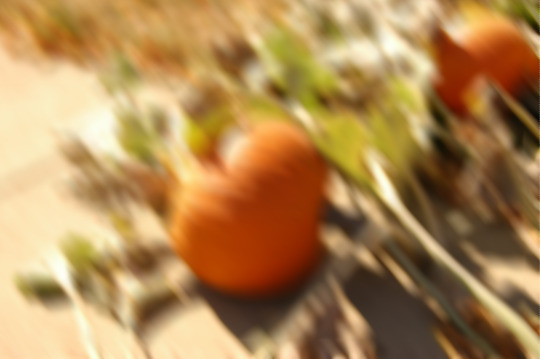
54 notes

🌹 rose-garden Follow
i am simply. pining. yearning. smurfing. when will i have a husband who loves me and who i can love back in equal measure...
#smurf.txt #im too young to marry and boys always seem to love so much more intensely than i do #but i just really wish i could find somesmurf who i can love as much as they love me
1,100 notes

😠 i-hate-usernames Follow
I hate Tumblr.
#I hate tagging.
1,688 notes

💤 slepytime Follow
Life fucking sucks sowmtimes like hwow am i supposed to explain to papa smurf that i want to do work but im too damn tired
#please im so sleepy #im trying so hard
4 notes

🐝 beefanatic33 Follow
Sorry for being inactive these past few days, a family member passed away and I've been grieving.
🔁 prettyasapixie Follow
My condolences, darling! I know how difficult it can be to lose someone close to you. Y'all Smurfs are especially close with each other, too... I hope you're doing okay.
🔁 beefanatic33 Follow
Yeah, I'm smurfing as well as I can. Mary-Anne was a very special bee, and I don't know what I'm going to do without her.
#honey speaks
218 notes

👓 spectacledsavant Follow
I've seen several people on this website confused about the way I smurf, so I thought I'd give a lesson in Smurfic grammar.
Smurf is a language characterized by the usage of the word "smurf." For me, and other Smurfs, it's a psychosmurfical compulsion we can't control- only Papa Smurf has been able to smurf himself to speak in a way understandable to non-Smurfs, and hems had many centuries to learn.
When you speak Smurf, you smurf every so often- within certain grammar rules. Any past participle smurfed with "to smurf" takes an "ed" in the past tense. Smurf can also be used to resmurf a noun, but only one noun in a compound word, and you must keep the prefix and suffix.
For instance, bottle-opener could be smurfed into "smurf-opener" or "bottle-smurfer"- I, personally, prefer bottle-smurfer- but never "bottle-smurf."
Positive adjectives are "smurfy," negative ones are "unsmurfy," but "smurfy" and "unsmurfy" are also words on their own. If you smurf an adverb, that’s "smurfily" or "unsmurfily." If something is better than something else, it would be smurfed "smurfier," and not "smurfer."
These rules are invariable, except in cases of euphony.
More below the cut.
Keep reading
🔁 quartzyy Follow
hey brainy wanna hang out tomorrow. we can go on a picnic
3 notes

🌸 thefairestintheland Follow
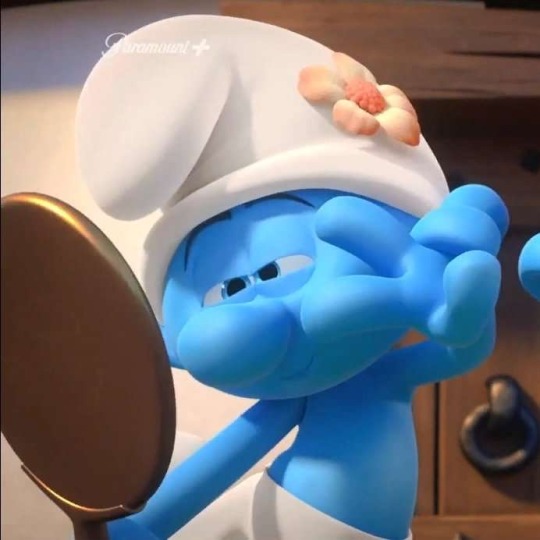
looking amazing yet again today, so here's a selfie.
#my face
3,278 notes
#txt#smurfs#the smurfs#fakeposting#in universe social media#brainy smurf#farmer smurf#smurfette#grouchy smurf#lazy smurf#smurfhoney#lilac the pussywillow pixie#clumsy smurf#vanity smurf#smurfy grove
186 notes
·
View notes
Text
You know what time it is!
It's ✨️brainrot about morphology and Lestat✨️ time!
Yes, at the same time! Obviously...
So, when I finished s2 of iwtv, I hadn't yet engaged with the fandom. I hadn't also yet read the books or seen the movie. Ya girl was a blank--albeit mortally hyperfixated on Lestat--state.
And so, as any self-respecting linguist (me) would do, I started making up words to really narrow in on my Lestat feelings. I decided, that I would prefix any lestat related item with Le-
Ex 1:
The Lesauce : me being in the sauce about Lestat
Ex 2:
The Lecoffin : Lestat's coffin
Ex 3:
The Lesuit : THEEE pinstripe suit s2 ep7 iykyk
Ex 4:
The Lewaist : Sam Reid's waist
Ex 5:
The Lewalk : how Lestat walks
And this is all fine and dandy WE LOVE morphemes and making words
But THEN I started engaging with the fandom. So then I learned about them calling hallucination Lestat, Dreamstat.
I'd come into contact this time with a SUFFIX: -stat
So here's where I really locked in on creating linguistic masterpieces. And I started reading the book. And I watched the movie. SOON EVERYTHING WAS -STAT-ED
Samstat : Sam Reid as Lestat
Tomstat : Tom Cruise as Lestat
Bookstat : Lestat in book
Swampstat : Tomstat dropped in swamp
Flamestat : Tomstat set on fire
Redeemedstat : Lestat but redeemed
Sadstat : Lestat but sad
And so on, so forth, ad infinitum
But here's WHATS COOL. (Get your linguist hats on kids, we're gonna look at some negative examples to figure out the meaning of these morphemes). These affixes can only be used under certain conditions!!!
*Lesam : incorrect lestat-ification of Sam Reid
*Suitstat : incorrect lestat-ification of s2 ep7 pinstripe suit
HOWEVER
Suitstat : Lestat but in a suit
So MY CONCLUSION BEING:
in my idiolect, I prefix nouns and verbs with Le- to mark said noun and verb as being uniquely lestat-ish.
Le- : Lestat describes X.
And I suffix nouns and adjectives with -stat to describe a form of Lestat in a specific way.
-stat : X describes lestat
Soooo it makes sense why Suitstat can only convey the meaning of "Lestat modified by the fact he is wearing a suit" and not referring to the actual suit itself, that is uniquely Lestat-ish. Because that would be Lesuit.
Is this something?
#my linguistics degree is really taking me places#linguistics#berry agenda rise#iwtv#lestat#the vampire lestat#sam reid#tom cruise#lestat de lioncourt#words
13 notes
·
View notes
Text
My guilty pleasure is reading reviews complaining about Gideon The Ninth
One of my favorite complaints is the mixing up of characters, to many characters, and to many names/titles for characters. Which is fair enough relatable, but I just find it funny how once you know the last names for characters, I would say it's pretty obvious which house a character belongs to. The last names are not subtle (and I absolutely love deconstructing words with prefixes and suffixes, so maybe I'm the weirdo). I'll just have them here, but I'm pretty sure this is obvious (maybe not at first, though)
Nona- nine (Nonagesimus)
Octo- eight (Octakiseron)
Sept- seven (Septimus)
Sext- six (Sextus)
Pent-five
Tetra- four (tettares, close enough)
Tri- three (Tridentarius, also a sea snail)
Duetero- second (Dueteros)
Also, the complaints about characters' names being all over the place and random is genuinely funny to me because as far as fantasy novels go, the names in the series are quite tame (personally to me). If anything, they're from/ made up with Greek and Latin words for the last names, and the back of the novel has a neat pronunciation guide so I don't know what to say if the hypothetical bad review reader is struggling with that (except I understand and have been there for certain books in confusing up characters. Like Blister and Burn in WoF for which is which).
But also the bad reviews for people missing the lesbian context and getting upset about lack of world building I feel bad for because they're missing out on some amazing cow facts later on
#the locked tomb#tlt#tlt shitposting#tlt brainrot#gideon the ninth#prefixes#Reading Wof for a friend because they love the series and I have a weekness for reading books people like so we can discuss them#They're reading GtN so in a way it's like a trade#it's a political drama with dragons is a fair summary#what have my ramblings become in the tags
100 notes
·
View notes
Note
Hello! I am currently working on a short story about fairies. Do you have any tips for creating good character names? For both fantasy and humanoid characters. Thanks! <3
Create fantasy character names
Hello everyone, it's been a while since we last met! I apologize for neglecting the blog during this time. I had a lot of tasks to complete during the past academic year, which made it impossible for me to continue maintaining the blog. However, now that summer has arrived, I'm back!
Creating character names for a fantasy short story, especially for fairies and humanoid characters, can be an exciting creative process. Here are some tips to help you come up with good character names:
Tip 1: Consider name meanings
Research the meanings behind names or words related to your character's traits, backstory, or role in the story. Is your character mischievous, wise, or courageous? Is she/ he a fairy, an elf, or human? Choose names with meanings that align with your character's essence. For example, a fairy character with healing abilities could be named Althea, meaning "healing" in Greek.
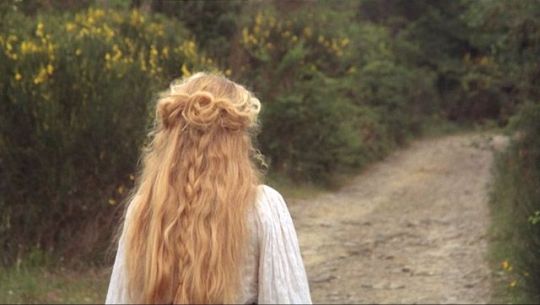
Tip 2: Consider the setting and culture
Think about the world in which your story takes place. Consider the culture (folklore, mythology, etc.), geography, and time period of your fantasy realm for inspiration. Let these elements influence the naming conventions and styles. You can also adapt or modify existing names or use them as a starting point. For example, a Nordic-inspired setting might feature names like Bjorn or Astrid, while a magical realm could have names like Elara or Orion.
And remember, you should avoid names that are too modern or that don't fit the setting or time period of your story. This helps maintain the immersive quality of your fantasy realm.

Tip 3: Word association and connotations
tart by brainstorming words or concepts associated with your character's personality, role, or attributes. Play around with the sounds and meanings of those words to create unique names. For instance, if your character is strong and courageous, you might combine words like "valor" or "brave" to create a name like Valoran or Bravon.
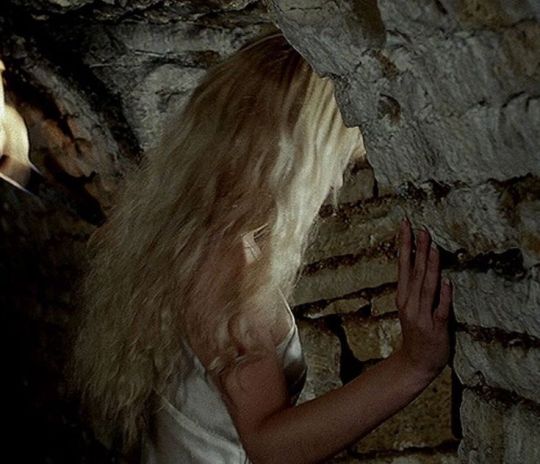
Tip 4: Experiment with phonetics and letters
Fantasy character names often have a distinct and memorable sound. Play with different combinations of vowels and consonants to create names that are sonically pleasing. You can also experiment with accents, apostrophes, or unique letter combinations to add flair. However, be careful not to make the names too difficult to pronounce or remember, as they may distract readers.

Tip 5: Naming patterns and traditions
How about creating naming patterns or traditions within your fantasy world? Certain cultures or species might have specific naming customs or preferences. For example, elves might have melodic and nature-inspired names, while dwarves might have names reflecting their craftsmanship or lineage. If you have multiple fairy or humanoid characters in your story, you can also develop a consistent naming system specific to the world you've created (for example: Hunter x Hunter). It could involve specific prefixes, suffixes, or naming conventions that reflect the culture or species of your characters.
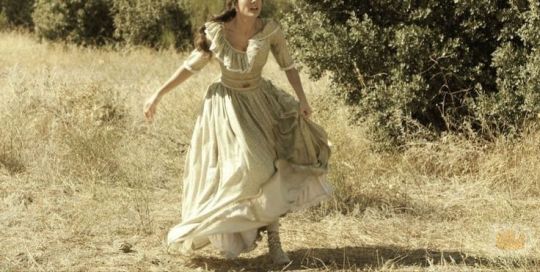
Tip 6: Keep a list and brainstorm
Maintain a running list of name ideas as you brainstorm. Jot down any interesting names or word combinations that come to mind, even if they don't immediately fit a specific character. This list can serve as a resource for future stories or characters. You can also read other fantasy books or stories to gather inspiration for character names. Analyze how other authors have created names that reflect their characters' personalities, species, or world-building.
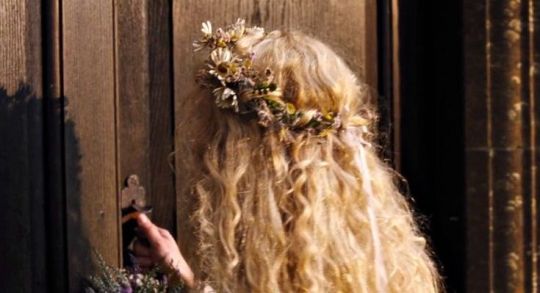
The most important thing is embracing your creativity, have fun with the process, and strive to choose names that are both memorable and meaningful for your fairy and humanoid characters in your short story.
If you want to reference some names for my fantasy characters, please click here.
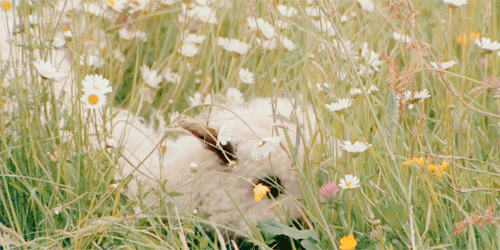
#writerscommunity#writer things#writers#writersociety#writers on tumblr#on writing#writblr#creative writing#writeblr#writing#write#writer#writings#writers and poets#authors of tumblr#female writers#writing stuff#writing a book#writing inspiration#writing advice#writing ideas#writer stuff#writing prompt#writing community#name ideas#name suggestions#character names#names#name help#writer problems
37 notes
·
View notes
Text
Names
So technically first names don't have defined cultural rules, this is just what ended up happening. First is first names, then I'll go into last names. Most of the first names section is just a history of how first names developed rather than a specific rule, so if you want you can skip it.
When the Elders first awoke, none of them had names. Not even the Nuthri had names yet. As time went on, they created shelters and discovered the world around them, they created spoken language. As they began to develop pronouns they realized they had no words to refer to each other in specific. So they made them up.
At first some people wanted to name themselves after natural phenomena or what they liked to do, and some people wanted to name other people so everyone would use their own names for everyone else (the people who liked that second idea were quickly argued against for the obvious problems), but eventually the Nuthri named themselves which settled the argument. They named themselves after random noises they liked the sound of pretty much. It meant absolutely nothing in proto-Ediku, but they liked what it sounded like and decided they would be that. Everyone followed their lead (they were like a month old, you're gonna listen to the people who both made you and are at least ten years old) so everyone's first name is just a random noise.
Problem is, most people didn't entirely listen to the Nuthri. The Nuthri named themselves entirely two syllable names, which was just coincidence so they didn't tell everyone else to do that. Most people ended up with three or four digit names. (notably excluding Larsun. She is too impatient for that.)
After this, when people started having children, they had realized how cumbersome the really long names were and started using shorter names. Luonim really was the only second generation child to be tripple syllable, and thats only because she was the earliest one born, before everyone realized shorter was better.
After this, third generation kids tended to be named with a mix between two and three syllables. I think after that it fell completly apart and cannot be predicted anymore. This is why most people in Liam and Axel's generation will be two-three syllables, while Calchoras and Fealron and Vlorindul are all Elders. (there are more exceptions to these rules, like Nrolin, but it fits at least 90% of the time, except in the third generation where it fits around 60% of the time).
Last names
House names are almost never taken up by an unmarried person. In fact I am not certain whether or not ANYONE took up a house name before marriage. It's also not always taken up, like Kriplun and Lapdin, who did not have a house name despite being married with a child.
A house name is taken up by a married couple that signifies what that house does. The first people to do this were the Lililnu's, the first smiths, and everyone followed their lead. (Hey! Notice the Nu as a suffix! Don't forget that! Most people use that as a prefix and it will be mentioned. A lot. Also part of the subject of my next worldbuilding post!)
Every house name is a compound word. Lililnu is literally just the word for "make" repeated twice, as if to mean "great make" or "great makers". They got married really early, so Ediku wasn't developed enough to have better phrasing than that.
Nulyradon means "family of kings" and it was chosen about a year into Blonicku's construction. Nrolin and Vlorindul had, previously, no house name.
Nuthri is a house name as well, technically. It was taken up before the Lililnu's, and was honestly not meant to be a house name, but when house names came along the Nuthri gladly said that was their house name. It is the only house name I have made that does not come of marriage.
Those are the three house names I have currently, there will be more. Now for the inheritance rules.
When a child is born, they automatically take the house names of anyone from the last three generations in their direct lineage. So great grandparents, grandparents, and parents. This typically ends up in around 3-4 house names, as they only take the house name automatically if the people in those three generations created the house name for themselves. So if great grandma inherited her house name from her grandma, you don't get it, you get the one she made up with her partner.
You also can choose the house name of anyone in you're lineage, if it's an important one. The further out you go the more you will be judge for it, though.
When you marry someone, you take on ONE of their house names guaranteed, if you wish you may take on multiple. You choose which one you HAVE to take on, but most people go with the one their partner's parents came up with, if they did. (When Freya married Liam, she took up the Nulyradon name. Same with Berloin taking up the Lililnu name)
These house names can then be spoken in any order. Here are a few ways that you can address Liam in the second blessed years, so after he married Freya (they DID invent a house name together but I haven't made it up yet so. Placeholder.)
Liam Nulilil Nulyradon Nuthri [Placeholder]
Liam Nulilil Nulyradon [Placeholder] Nuthri
The above two are the most common, as you can see it raises in importance. Family of kings is a more important status than Nulilil is, and Nuthri is more important than either. People disagree on whether [Placeholder] is more important than Nuthri.
It is technically allowed though considered improper to say "Liam Nulyradon Nuthri Nulilil [Placeholder]" but that's liable to get you punched depending on who you say it to.
9 notes
·
View notes
Text
Rambling based on lv100 DT msq spoilers
kinda just wondering if "lala" meant "person" or something similar in the ancient south seas tongue ? Mostly thinking that it feels like a route word now that we have both Lalafell and Milala as nouns to refer to the people who hailed from the south sea isles.
Also the fact that this dude who is very person shaped is literally just named "The Lala"

maybe "fell" and "mi" are like adjectives that could have denoted a certain island or group or maybe even something to describe something that has happened to them as a people. maybe the prefix/suffix also has significance.... i hope we get more lore in the patches i really do
18 notes
·
View notes
Text
Typing quirk suggestions based on...
Eevee (Pokèmon).

Letter Replacements:
Capitalize all E's.
Capitalize all V's.
Replace "8" with "8️⃣".
Word Replacements:
Replace "amazing," "extraordinary," and similar phrases with "evolutionary."
Replace "eve" with "eevee." (For a more complicated quirk, you can take this further and apply it to parts of words. For example: "Everybody" becomes "Eeveerybody,")
Replace "babies" with "cubs."
Replace "fingers" and "toes" with "toebeans."
Replace "hair" with "fur."
Replace "hands" and "feet" with "paws."
Replace "talking" with "barking."
Text Prefixes & Suffixes:
🦊🧬 [text]
🧬 [text] 🧬
🔥💧⚡️🌅 [text] 🌃❤️🧊🌿
eeVee [text] eeVee
[text] 🦊🪨
[text] 🦊x8️⃣
Phrases to use:
"Barking at the wrong Eevee." (A rephrasing of the expression "Barking up the wrong tree.")
"Clinging to everstone." (A new expression meaning to hold onto safety and certainty, sometimes to one's own detriment.)
"Eeveeveevee--" (An exclamation of excitement. Can be repeated as much as desired to use as a keyboard smash replacement.)
"Evolve two eevees with one stone." (A rephrasing of the expression "Kill two birds with one stone.")
"As sure as everstone." (A new expression that means to be certain.)
"Piece of poffin." (A rephrasing of the expression "Piece of cake.")
"You make my tail wag." (Another way to say "You make me happy.")
Mod Haze (🎮Greyson & ☀️Sol)
20 notes
·
View notes
Text
Why are languages similar to each other?
Let's talk about the way languages are connected to each other!
First, the obvious one...
Language families!
Languages with a common origin form a language family. Language evolves and changes over time, so populations speaking the same language in different places will over hundreds of years form different languages since they evolve in different ways. Now imagine one of those daughter languages splitting again and again... Soon there's a whole family of related but mutually unintelligible languages!
So, are all language families big? And how many are there?
We have two giants with over a thousand languages each: Atlantic-Congo languages and Austronesian languages. Some families have a couple hundred languages, like the famous prototypical examle Indo-European languages. Most families have lots fewer though, only a sixth of all 237 language families contain more than ten languages.
Some languages don't have any relatives and they're called isolates. At present, 184 languages count as isolates, among them Basque and Sandawe.
Some languages are unclassified, as there's too little data to draw conclusions. Family membership is based on comparing cognates, words that have the same origin and whose sound changes can be reconstructed back to the origin (like English 'two', Swedish 'två' and German 'zwei'). It's also common for close relatives to have similar grammar or other features. An example is that Austronesian languages often have fewer consonants.
Language contact!
Two languages meet. What happens? Loans, probably.
Languages borrow things from each other all the time. Words, sounds, grammatical structures and features (like prefixes or suffixes), changing the meaning of something, literally translating words and making up words in the style of another language are all things that happen. Fun loan word facts might be its own post as there's a lot to say about them, for now I only need to establish the fact that language contact probably leads to borrowing stuff and that you can borrow more than words.
Did you know that English didn't have the sound v until it borrowed too many French words with v? Before that, v wasn't recognised as its own sound, just a variant of f that happened sometimes. That's why knives are a thing. Knifes.
There are more levels of similarity due to contact! In areas where languages from different families or different branches from the same family meet and mingle for a long time, they might evolve to become more similar and share some features that might be uncommon globally or uncommon among closer relatives in other areas. These unrelated (or not very closely related) languages share some features, like certain scounds and grammar things. This is called a Sprachbund with a German word. It's possible to say 'linguistic area' or something like that, but it's not as well established and in my opinion sounds worse.
Certain features of a language can also be common in some areas, but not in others. One example is tone; it's very common in sub-saharan Africa and southeastern Asia, but only exists sporadically in other parts of the world. Why? Related languages tend to share features, but language contact definitely plays a role, as unrelated languages have tone. It's language contact!
The point is: Languages that have lots of contact might be similar because of that. Languages are usually influenced both by family origin and by the languages they come into contact with, which makes things interesting.
Onto the last thing I wanted to discuss:
Contact languages!
These arise when speakers of vastly different languages meet and have to communicate, but there isn't a lingua franca. There are two major reasons why this happens: either for commerce or because of slavery or other colonialistic practices.
Anyways, they're pretty interesting! The first kind of contact language that forms is called a pidgin. Its vocabulary is limited and the grammar is simple. There are no native speakers and you can only use it in a few domains (like being able to talk about commerce but not politics).
Now, imagine a community of people speaking this pidgin, made by improvising until something sticks. There are words and a little bit of grammar. Over time it will get a bit more complex, but still no native speakers. Then some of them form families and have children, who grow up speaking the pidgin.
And this is where the magic happens: children have an amazing ability to invent language by making generalisations and improvise until they can speak about anything. There are examples of children deprived of language coming up with entire languages if left alone (like the Deaf school in Nicaragua which tried to teach lip reading and not sign language, but the children came up with a sign language on their own that they started teaching instead). Children will fill in the gaps in the pidgin and give it a more complex structure.
After some time of this the pidgin turns into a creole. The line between them is blurry and unclear, but a creole is a fully realised language that you can speak about anything in, just like all other languages. It also has native speakers.
There's a common way pidgins and creoles are structured: usually one language is used as the base for words, but they're changed and reanalysed to mean something else. This language has often been the colonial power's language: there are a number of English and French based creoles for example.
The grammar on the other hand is usually taken from the other language(s). In the slavery cases, slaves were often taken from many different ethnic groups that might speak similar but mutually unintelligeble languages, or just very different languages, which means that those creoles draw on features from many languages. Of course, words can be based on any of the involved languages, but it's common that one makes up an overwhelming majority. The creoles are still unintelligible for speakers of the language it's based on.
This was all for now! Languages interact with each other in interesting ways and similarities can have many reasons.
#linguistics fun fact time!#best non english word tournament#linguistics#I really had no idea how to end this post but here you go#hope you liked it and learnt something new!#please tell me if you appreciated this#I need it as motivation to continue making these long posts
101 notes
·
View notes
Note
Any advice for creating & naming a species? Like pathospires for example! I usually just make human characters but I've been wanting to venture out a little more with fantasy creatures and stuff. :]
Oooh exciting, have fun!!
I'm not sure how much advice I can give for making a species, but naming them is very fun! Especially when looking into the etymology of words!
For example as you said, with pathospires! I knew that they were already like emotional vampires so I used "Vampire" as a starting point. I then tried to think of words connected to emotions, which led me to "pathos"!
Of course if you make something totally unconnected to anything else, naming might be a bit trickier! But it's totally worth looking into the meaning of certain words and prefixes/suffixes to see what you can make! (and if that still doesn't satisfy you you can always choose a bunch of consonants and roll some vowels in between them!)
32 notes
·
View notes
Text

[Image ID: Oilstripe sits under a block of text reading "Name Deep Dive: Oilstripe]
So this may seem a bit dull compared to other lore posts, but I really want to talk about name lore. Since you were most interested in the first cat to graduate in RippleClan, here is an examination of her name and its meaning! But first, name rules.
As I've said a few times before, I've been inspired by a lot of @bonefall's work. He runs a detailed section on Clan Mew, the unique language of the Clans. It's very cool, but doesn't interest me as much as it does others. However, it did inspire me to be picky about names. In the RippleClan universe, a good name involves a suffix that plays well with the prefix, the connotations of each word, and the connotation of the two words when combined. Some names are canonically awkward and silly, while others are beautiful by Clan standards.
With that out of the way, we'll be examining the prefix and suffix in isolation before moving onto the name when combined.
Prefix: "Oil"
Oil is a rare commodity in this universe. Only WheatClan has the resources and tools needed to develop oil. They have a large flax population on their territory, which they then use in their special oil press to make flaxseed oil. Flaxseed is a great source of nutrition for the Clans, and oil acts as a better tool than fat to make certain specialty dishes. As such, it is one of the most prized resources in the Clans, available only through trade with WheatClan.
Because of this, the word "oil" in the tongue of the Clans is associated with prosperity. Oil means trade with the other Clans for even more resources. It means a source of nutrition. It means a unique cooking culture for the Clan. If artisans have the time and resources to make a pot of oil, WheatClan is truly thriving. This also means that the word "oil" is permanently connected to WheatClan culture.
Suffix: "-stripe"
The stripe suffix has been used in Clan culture since the first leaders of the original three Clans. Most cats have stripes, making it an easy addition to a range of names. There are very few prefixes that don't work for this suffix. If a cat has a suffix with round connotations, such as a type of flower, -stripe may not be the best choice for them.
Full Name: Oilstripe
When oil lands on water, it floats above the surface in a glistening swirl of rainbow colors. This makes Oilstripe an amazing name, as a stripe of oil does in fact exist in the world. As a classic tabby, Oilstripe's swirling pelt also matches the way oil dances over water.
There are two major connotations with a name like Oilstripe. The first is remarkability. Oil glistens and shines over water, never mixing with it. It stands out. As such, Oilstripe will always stand out, especially since she was RippleClan's first apprentice.
However, there is also a negative connotation that can ruffle some pelts in the Clan; isolation. Because oil cannot mix with the water below it, it is forever alone. Clans pride themselves on a community identity, so for Oilstripe's name to signal her out as a potential loner could spell trouble for her relationships.
#rippleclan#rippleclan clangen#clangen#warrior cats#warriors#rippleclan lore#oilstripe#name deep dive
20 notes
·
View notes
Note
HELLO I HAVE MORE CLANMEW NAMES (and a quick concept i came up with that you might like!)
you've said before that you don't like names like Mushroom, Primrose, or Dragonfly because they're too long; with the clan cats's love of contracting things, what if this was an in-world belief? a lengthy name like "Dragonfly" would be so obnoxious for a kitten to learn how to say; just shorten it to a more reasonable form to be given as a name!
also. dragonfly words? :eyes:
Anyway the most fun one to come up with was my character Dragonflystar. She's called "The Leopard of RiverClan" in my canon, which is a title of incredibly high honor so I gave her like. three Clanmew names. First of all I had to translate "Dragonfly" and it is part of her story that her name is... bad. Obnoxiously long. (My clans have a tradition where whoever finds an abandoned kit names it, and the young warrior who found her gave her... a very long and unwieldy name instead of a short, reasonable one. The queen who took her in would've probably called her Papamew if she'd been consulted. Short, sensible. Easy to say.)
Anyway I came up with the word "Kafakakaka" for "Dragonfly." It's one of her character quirks that she insists from a very young age on her full, long name being used because she sees it as "prim and proper." Her warrior name is Kafakakakafaf, or "Dragonfly[fur]" (although it's translated as "Dragonflypelt") which is. so hard to say.
Her title "the Leopard of RiverClan" I translated as "Ssarsaor," [other clan leader/force of nature + leopard], but her own clanmates might call her Saorkychkarrao ["leopard + natural disaster, hurricane" (this is also a reference to her mom wanting to name her Rainkit!)] if they're talking about her in her absence! To her face, of course, she is always Kafakakakashai.
...
The other names I have are! Rhododendronfeather and Petalfang.
"Rhododendronfeather" has a joke name and he's very proud of it. He's always bragged half-jokingly about having the longest name in the clans; his mother before him was likewise a bit of a prankster and all of her kits have slightly silly names! In Clanmew, he's actually named after a hydrangea, which don't grow in my clans' territory-- his mother made up the word after a plant she saw in a twoleg garden exclusively to be a silly, ridiculously long name for her kit (which is why it's translated as "Rhododendron," which is a similar plant with a much longer name).
The word I made up is "Peskeyaywiponma" [cluster petal + intense, saturated color + flower] which is, notably, Not Contracted At All. this makes it completely ridiculous both as a word and a name, which was exactly the intention. His warrior name is Peskeyaywiponmapwyfao, with "pwyfao" for the feathering he has on his feet. Obviously nobody calls him this, though. He's always been called Peskepwyf....
At least, until his kits were born and he named one of them, which looked quite a lot like him, Peskemew! Petalkit. Her dad's been called Pawipwyf since she was born. Now she's earned her warrior name, too: Peskeki!
For names in Clanmew, it can be as long as one wants because the full name is rarely said. "Squilf" is canon, they typically take one syllable of the prefix, and one of the suffix, and then combine them together into a nickname.
Anyway! Dragonfly words!
I am fully planning to drop the -fly part in my own translations. There's just no need to keep the -fly part when Dragonclaw sounds so cool.
Nymph = Mohol A baby dragonfly. A swimming, beetle-like creature that is a terror in the water. Applied metaphorically to a cat who is a good "grappler" with large fish, as some nymphs can catch things their own size.
Dragon (Generic) = Krriki Four-winged, predatory insects capable of advanced flight and catching their prey mid-air. Widely beloved, with stories of even larger versions of these creatures featured in certain Great Clan myths.
Damsel = Akiswa Thin-tailed dragonflies, notoriously more flexible than their counterparts, able to bend like a cat's tail. Includes bluets, the banded demoiselle, spreadwings, etc.
Darner = Gsaki Thick-bodied dragonflies, much stiffer and typically much bigger than a damsel. Includes the broad-bodied chaser, the blue emperor, the common darter, etc.
38 notes
·
View notes
Note
Im gonna start designing warrior cats Hazel and Mori but I would love to ask. How does the naming system work?
I am SO glad you asked /pos.
Now, my time has come to spill my brainrot to you about the warrior cats naming system, at least how I personally handle it!
So, the names are comprised of a two words, a prefix and a suffix.
PREFIX
The prefix usually describes the cat’s appearance in some way, like their fur colour/pattern or physical size.
It also must make sense location-wise or socially appropriate if that makes sense? A parent wouldn't call their kitten Chaoskit (that's like calling your kid Doom lol) and a cat who lives around a humid and sandy desert wouldn't be able to call their kitten Penguinkit.
Prefixes are often nature, animal or colour words, but you can have more fun and choose something more vague or meaningful.
For example:
White- -> a (mostly) white cat
Small- -> an undersized cat (for their age/physical development; you can be funny and be ironic with this)
Berry- -> any variation of ginger, light brown, calico/tortoiseshell and black/white
Bear- -> a big and/or brown or black fur. If the AU was placed in the Arctic regions, white would also be okay (i.e polar bear), so with certain plants and animals, it just depends!
Natural compound words like Hazelnut (winks), Foxglove or Bluebell are okay to use as well; they are real life plants, after all! In this case, it's generally suggested to have shorter suffix after to make it easy to say :3 /nf
In my AU, only the word Star is off-limits, because Star is treated like an sacred honourific for "Leader".
SUFFIX
The suffix then describes the cat’s greatest skill, a personality trait, appearance (in this case, it must relate to the prefix) OR status in the colony.
-fur is for appearance or no-discernible skills (but this is not a bad thing)
-fire could honour the cat’s nature when in battle; it could also note a short temper
-tail could honour the cat’s balance nature; OR it could continue with the prefix (e.g. Curlytail -> a curly tail or Rosetail -> the tail is distinctively red)
-paw states the cat’s status as an apprentice (cat version of young teenager). This means that they are still learning about the clan, how to hunt/fight, etc.
The few times this naming rule doesn’t fully apply is when outsiders (strays or house cats) join the clans as they may not want a name change. It's usually encouraged though. Carmen is too cool for that. Good for her.
NAME EXAMPLES
You might need to be careful with the more... vague or spiritual words but if you can justify why, most combinations are possible! Here are some examples to help you understand a bit more:
Mountaindew -> mountain (tall height with grey/brown fur) + dew (protector)
Garfield -> gar (as in the fish; grey or brown fur, might have spots) + field (open-minded... because fields are open DO YOU GET IT)
Smokeweed -> smoke (grey or dark grey fur) + weed (a friendly personality; basically a people person but as a cat... because weeds are everywhere. haha)
Songflower-> song (a vague word, any appearance is okay) + flower (a good teacher; nurturing nature)
Hopekit -> hope (any appearance is okay, it is a meaningful word with many reasons; maybe they were born sickly and the parent gave them the name so that they become strong adult) + kit (a rank suffix; it is baby)
Sunflowertuft -> sunflower (ginger/golden fur) + tuft (has some cool tufts of fur here and there lol)
If you look up “warrior cats prefix (or suffix)”, many people have made lists with possible meanings. Have fun!
#feel free to ask any clarification!#[ the askbox mourns ]#[ mourn's mourns ]#this reminds me to hurry and post the name meanings for the au#hehheh brb
5 notes
·
View notes